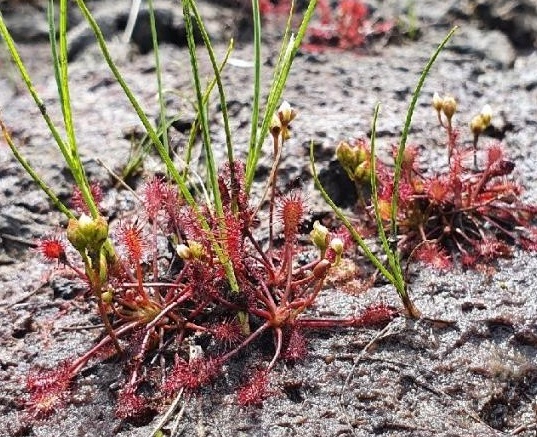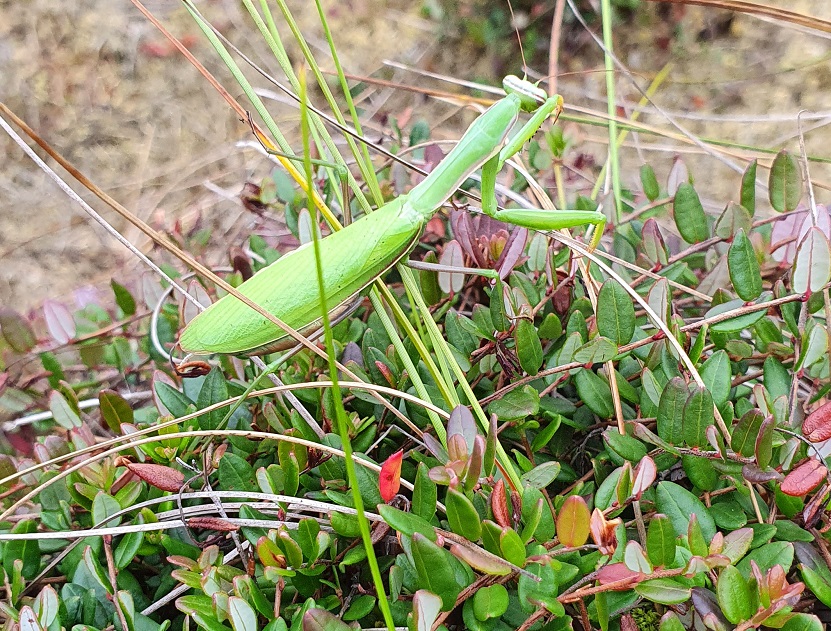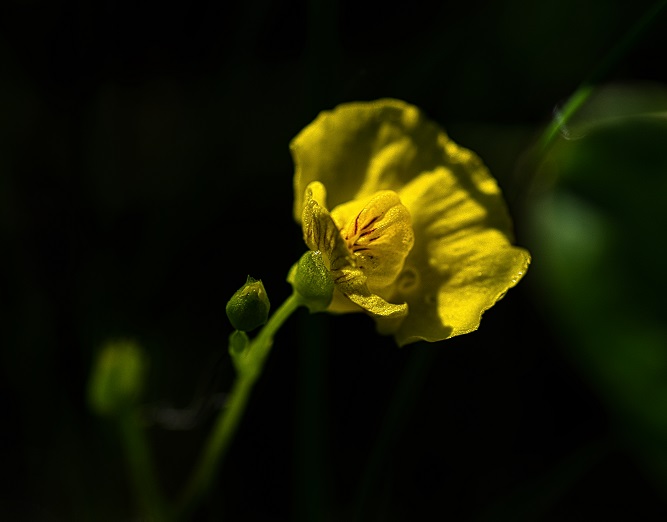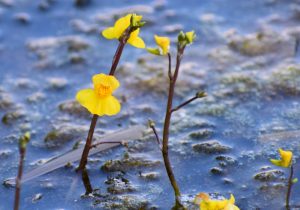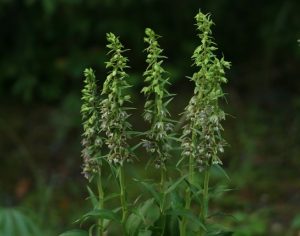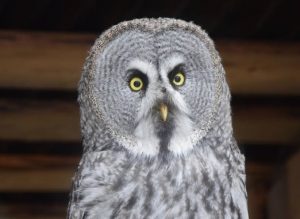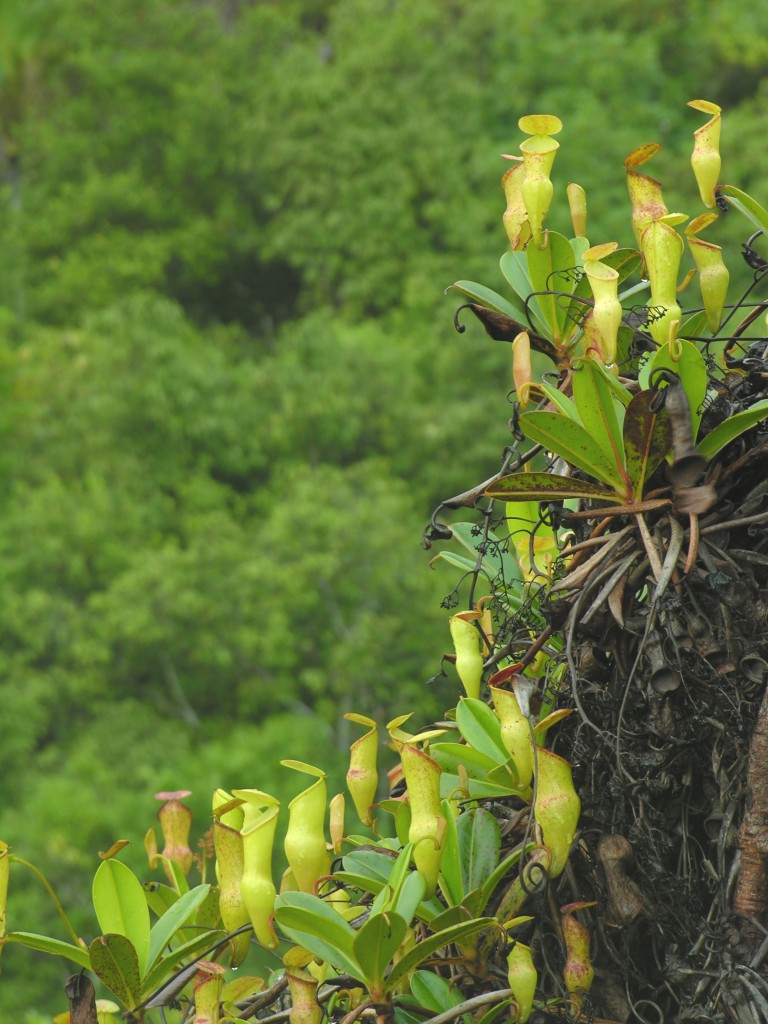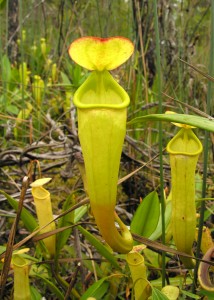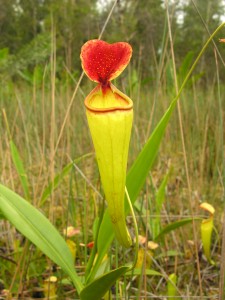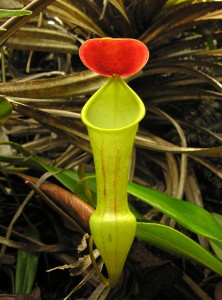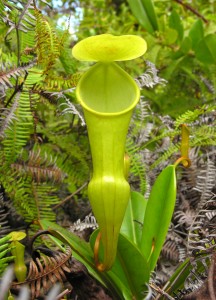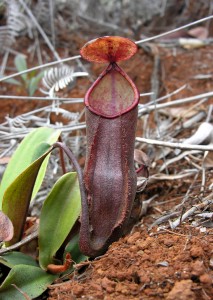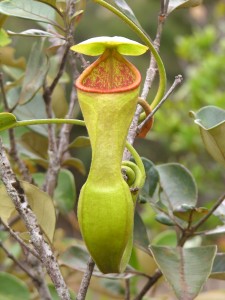At the start of the twenty first century, approximately 120 species of Nepenthes have been discovered across the Old World continents. The overwhelming majority of species within this genus occur exclusively in South East Asia with the greatest diversity to be found on the great islands of Borneo and Sumatra. Generally Nepenthes sp. occur across relatively limited geographical ranges, and in some cases, individual species are found on just one or two mountain peaks. Outside South East Asia seven species are known to occur. Of these N. mirabilis is by far the most populous, being distributed from Hong Kong and continental China to the northern tip of Australia and across most of the islands in between. N. mirabilis is the most widely distributed of all tropical pitcher plants and represents the exception in the genus.
Five of the remaining outlying species are endemic to individual and highly isolated islands or island chains. N. vieillardii occurs exclusively on New Caldeonia, N. pervillei occurs exclusively across the islands of the Seychelles, N. distillatoria occurs exclusively on Sri Lanka and N. madagascariensis and N. masoalensis are both endemic to the island of Madagascar.
The seventh species of Nepenthes that is found outside South East Asia is endemic to the Khasi Hills of the Garo-Khasi range in Meghalaya, India. This Indian species is N. khasiana and is named after the mountains where it exclusively occurs. While N. khasiana is unusual in that it occurs exclusively within continental Asia, it also occurs at some of the most northerly of latitudes of all known Nepenthes sp.. It is easy to draw parallels between the biogeography of the habitat of N. khasiana and the isolated island habitats of five of the other outlying Nepenthes sp. of the Pacific and Indian Oceans. The biogeography of the Khasi hills can in many ways be seen to be akin to that of oceanic islands. The Khasi Hills represent a highly isolated upland habitat where temperatures are considerably cooler and humidity and precipitation considerably higher than the surroundings. The isolation of N. khasiana has driven its evolution as a distinct species in precisely the same way was we see in the other five oceanic Nepenthes sp..
In this article we will examine three of the outlying Nepenthes sp.; N. pervillei, N. vieillardii and N. madagascariensis.
N. madagascariensis was the first of all Nepenthes to be discovered. It was first recorded in 1658 by the by Etienne de Flacourt, ten years after his appointment as governor of Madagascar by the French East India Company. Etienne de Flacourt described the plant in his influential work Histoire de la Grande Isle de Madagascar published in 1658 and described the species under the name Anramitaco. It was French botanist Jean Louis Marie Poiret who in 1797 published the plant under its current name denoting the island where this species endemically occurs.
It is unfortunate that this species, discovered over 350 years ago should remain so relatively obscure even today. It is relatively seldom cultivated and has remained little documented in comparison to other species, yet it is one of the most beautiful of all pitcher plants. N. madagascariensis occurs across the wetter western half of Madagascar and has been recorded from the north west along the western coast of the island to the extreme south and the plant is best known from the extensive populations at localities close to Fort Dauphin. N. madagascariensis occurs prolifically in wet sandy or peaty swamps at low altitudes generally between 0 – 300 m.a.s.l.. The uppermost altitudinal limit for this species is not known and it appears that despite past reports, this species is pre dominantly a lowland species. In the south of Madagascar it is frequently observed growing at sea level and it appears to be somewhat less common at higher elevations. This species is unusual among Nepenthessince it frequently grows in very wet habitat including saturated sphagnum bogs and the margins of coastal mangrove swamps, often growing amongst pools of standing water.
For the most part, N. madagascariensis grows as a prolific scrambler and readily forms a climbing stems up to 5m in length which clambers with the support of surrounding vegetation. In areas where it is not surrounded by low growing vegetation, it will occasionally attempt to grow upright, although generally freestanding stems rarely exceed 1 m in height before they topple and continue growing by scrambling along the ground. Usually it grows in little or no shade.
The lamina is up to 40 cm in length, it is linear in shape and terminates with an obtuse leaf apex from which the pitcher tendril extends. The leaf base is slightly decurrent. In the lower pitchers, the lower half of the trap is somewhat globose in cross section and up to 10 cm in total diameter whereas the upper half of the trap is cylindrical and slightly narrower. The difference in diameter between the two portions of the leaf cause the lower section to appear slightly globose and it is further distinguished by the presence of a clear hip at the midsection. The lower pitchers of N. madagascariensis sport 10 – 20 mm wide, slightly incurved wings which are lined with a fringe of densely arranged, projections that are 4 – 8 mm long. On the lower pitchers, the peristome is up to 7 mm in width and defined with ribs that rise up to 1 mm and are spaced up to 2 mm apart. The peristome terminates either side of the point where the lid attaches to the pitcher and so it is missing from the center of the back of the pitcher opening. On both sides of this gap, the width of the peristome is exaggerated to form two distinct points that in extreme specimens, can exceed 2 cm in length. The lower pitchers and upper are devoid of a keel but both sport an unbranched spur that is up to 10 mm in length. Generally, all parts of the lower pitchers of N. madagascariensis are reddish pink or occasionally purple with the exception of the peristome which is yellowish green. The interior of the pitcher is typically slightly lighter in colour than the exterior.
The upper pitchers are extremely spectacular and can exceed 25 cm in total length. In shape the upper pitchers are infundibular and increase in width smoothly from the base of the trap to the pitcher opening. The pitcher opening is the broadest part of the trap and is generally the pitcher opening which is generally 5 – 8 cm in diameter in mature specimens. In some pitchers (possibly intermediate forms between the upper and lower traps) a slight bulge and a reduced hip is discernable in the lower half of the pitcher. The upper pitchers of N. madagascariensis are devoid of wings. The lid of the upper leaves is circular or slightly elliptic in shape as is the case in the lower pitchers however often, the sides of the lid are consistently bent slightly upwards giving it a slight U shape is cross section. The peristome is conspicuous and is often up to 12 mm in diameter, with ribs that rise up to 2 mm, spaced up to 2 mm apart. In extreme variants, the peristome is consistently enlarged and can exceed 17mm in diameter. The majority of N. madagascariensis plants produce spectacular upper pitchers that are pure bright yellow in colour but occasionally variants can be found that consistently produce yellow upper pitchers with spectacular lids that are bright red on the undersides and lined with yellow nectar secreting glands. These unusual colour variants sometimes also have peristomes that are suffused dark red to varying degrees. The underside of the lid of the upper pitchers of N. madagascariensis is lined with up two twenty circular, very large (up to 4 mm in diameter) nectar glands and a multitude of much smaller glands too. The large glands are most conspicuous on the variants that produce lids sporting red colouration.
The second species of outlying Nepenthes which we will consider in this article is N. pervillei of the Seychelles. N. pervillei occurs exclusively on the islands of the Seychelles to the north east of Madagascar and grows mainly on the larger islands in the archipelago, namely Mahé and Silhouette. This species was named in honour of 19th century French collected Pervillé and was originally described N. pervillei by Blume in 1852. Pervillé appears to have been the first to have collected and studied the plant in the wild. In 1921 it was however redescribed by Hallier and placed in a separate genus under the name Anurosperma pervillei on the basis of the differences between the seed of this species and that of all other Nepenthes. This reclassification has since been rejected however on the basis that the differences in seed morphology are insignificant in context with all other morphological similarities in line with the other Nepenthes sp.. In light of recently discovered Nepenthes sp. which display seed that bears similarities with that of N. pervillei, the replacement of this species back into the genus Nepenthes seems to be wholly justified.
The habitat of N. pervillei ranges between 500 – to at least 750 m in altitude and probably higher on the inaccessible slopes of Morne Seychellois (905 m), the highest peak in the Seychelles archipelago. The islands of Mahé and Silhouette which form the main habitat of N. pervillei are heavily eroded granitic outcrops. The substrate of the slopes on these islands contains an extremely high quartz content which accumulates as the granite bedrock weathers and denudes. I observed N. pervillei growing in a 10 cm deep layer of pure quartz crystals (2 – 4 mm in diameter) which directly overlay the bare granite bedrock. This unusual crystaline substrate is extremely vulnerable to desiccation since it heats rapidly under the tropical sun and is extremely well drained owing to the topography and impermeable underlying geology. Fortunately precipitation and humidity are reliably high throughout the year in the Seychelles and rain falls most days across the habitat of N. pervillei.
N. pervillei grows as a terrestrial however climbs and scrambles prolifically and produces ariel rosettes very readily. Climbing stems of this species may exceed at least 5 meters in length and probably reach yet greater sizes where plants grow amidst dense vegetation. This species displays a clear ability to rapidly produce offshoots and grow vigorously and robustly through surrounding bushes and scrub which enables it to represents a prominent and conspicuous member of the canopy of its habitat. The vegetation of the slopes of Mahé and Silhouette generally comprise of low growing, relatively sparse woody shrubs, which form only a low (less than 3 meters) partial canopy. For the most part, N. pervillei grows in habitat that is little shaded and exposed to direct sunlight.
The morphology of the foliage of N. pervillei displays profound affinities to that of N. madagascariensis which reflects the proximity of these two species in relation to one another and in respect to their isolation from the rest of the genus. In overall shape, size, colour and diversity the two species appear very closely related, however the seed of N. pervillei differs from that of N. madagascariensis and subtly from all other Nepenthes in the respect that it lacks prominent wings reflecting the adaptations of this species towards inhabiting isolated islands. Winged seed would be a clear disadvantage for N. pervillei since seed that is transported by wind would blow away and be lost at see, since the closest land (Madagascar) lies over 1000 km away. Evolution would therefore have been driven in a direction towards minimizing the wings of the seeds of N. pervillei to the current extent of no wing – that is to say that within the original variability of the species, the individuals which produced seed with the smallest average wing size would have been most likely to reproduce in greatest numbers and thereby perpetuate the reduction of the seeds’ wings. The need for wingless seed would not be so strong on the island of Madagascar which is reflected in the winged morphology of the seed of both Nepenthes sp. that endemically occur on that island.
The lamina of N. pervillei is up to 30 cm in length, it is linear in shape and terminates with an obtuse leaf apex from which the pitcher tendril extends. The leaf base is slightly decurrent although to a lesser extend than the closely related N. madagascariensis. The lower portion of the lower pitchers are globose and up to 8 cm in diameter in cross section, whereas the upper half of the lower pitcher is largely cylindrical and considerably narrower being generally less than 6 cm in diameter. The difference in width between the two halves of trap gives the lower pitchers of N. pervillei a pronounced hip in cross section. The lower pitchers of N. pervillei display conspicuous 5 – 15 mm wide, slightly incurved wings which are lined with a fringe of sparsely arranged 10 – 15 mm long projects which are considerably larger than those of N. madagascariensis. The pitcher opening of N. pervillei is more circular than that of N. madagascariensis and the peristome is somewhat reduced, being generally less than 5 mm in width. On the lower pitchers, the perisome is defined with fine ribs just 0.5 mm high and spaces 0.5 – 1 mm apart. The high density of the peristome ribs gives the peristome a somewhat shiny appearance although in general, the peristome ribs are inconspicuous. Similar to N. madagascariensis the peristome terminates at the point where the lid joins the back of the pitcher opening which cases there to be a ‘gap’ at the back of the peristome however unlike N. madagascariensis the peristome is of a more or less constant width at all parts of the pitcher opening. The lower and upper pitchers of N. pervillei are devoid of a keel but sport a diminutive, stubby spur that is generally less than 6 mm in length. All parts of the lower pitchers of N. pervillei are reddish purple and the peristome is typically a dark shade of pink. The interior of the pitcher is typically slightly lighter in colour than the exterior. The lid is circular in both the lower and upper pitchers.
Much like N. madagascariensis, the upper pitchers of this species are spectacular and very colourful colourful. In most cases the upper pitchers are 15 – 20 cm in height. The lower third of the leaf is ovate in cross section, however below the midsection, the diameter of the trap is strongly constricted. The upper two thirds of the pitcher are gently infundibular towards the pitcher opening which gives the trap a distinct hip. The upper pitchers of N. pervillei are devoid of wings. The pitcher opening is the widest part of the upper pitchers of N. pervillei and is generally 4 – 6 cm in total diameter. The lid of the upper pitchers of N. pervillei is generally circular in shape and flat, although positioned at a slight angle, inclined upwards towards the front of the pitcher. The peristome is up to 6 mm in width. It is lined with inconspicuous ribs that rise up to 0.4 mm and are spaced 1 – 1.5 mm apart. The underside of the lid of the upper pitchers is often lined with 10 – 20 circular, large (up to 3 mm in diameter) nectar glands as well as a multitude of much smaller glands. The upper pitchers of N. pervillei are typically bright yellow in colour, often with a variable degree of very subtle red or orange colouration. Variants that produce pure yellow pitchers are common across Mahé, and much like N. madagascariensis, a rarer variant that develops spectacular red colouration on the lower surface of the lid can also be distinguished. Evidently the red-lidded variant and the typical yellow strains regularly interbreed since intergrated with subtle light red or orange colouration on the underside of the lid are frequently found where the two colour forms grow together. Little other diversity is apparent between the populations of N. pervillei on Mahé and Silhouette.
The last of the three outlying Nepenthes which we will consider in this article is N. vieillardii from the island of New Caledonia, located to the north east of Australia. New Caledonia is home to a surprising relatively diverse array of carnivorous plants, many of which are endemic and notable for their unique characteristics. Such is the case in N. vieillardii which is distinct from all other Nepenthes species in terms of its morphology and ecology. At the current time, N. veillardii is known to occur exclusively from New Caledonia and the much smaller, neighbouring island, Ile de Pins. It should be noted that collections of Nepenthes have been made in the west of Papau New Guinea which appear to resemble N. vieillardii closely however these plants need to be observed in their habitats to establish their taxonomic proximity to this species.
N. vieillardii was first described by Joseph Dalton Hooker in 1873 and was named in honour of French plant collector and explorer Eugène Vieillard who traveled extensively across New Caledonia during the mid 19th century. N. vieillardii is known to occur across New Caledonia (and the neighbouring small island of Ile de Pins) between altitudes of 0 – at least 850 m.a.s.l., its distribution is therefore the most easterly of any species of Nepenthes. In New Caledonia it appears to be most populous at elevations of 500-600 m.a.s.l. and predominantly in the south of the island, but this may simply be due to better accessibility of this area. The substrate of the habitat of N. vieillardii is typically impermeable and highly weathered. It generally consists of clay or sand with a high iron oxide content and in most cases, is extremely deficient of organic matter and nutrients. The substrate is highly prone to drought and N. vieillardii tolerates some of the driest conditions of all Nepenthes sp.. At the populations of N. vieillardii which I observed, surrounding vegetation consisted of stunted scrub and bushes which was generally sparse and below 4 m in height. N. vieillardii grew as a terrestrial forming scrambling and climbing stems up to 6 m in length although probably climbing stems reach considerably longer lengths in areas of denser, taller vegetation.
The lamina of N. vieillardii is up to 35 cm in length and up to 8 cm in width. The leaf blade is linear or (in established specimens) oblong in shape and terminates with an obtuse leaf apex from which the pitcher tendril extends. The leaf base is slightly decurrent. In the lower pitchers, the lower third of the trap is somewhat globose in cross section and up to 7 cm in total diameter whereas the upper half of the trap is cylindrical and slightly narrower. The difference in diameter between the two portions of the trap cause the lower section to be defined by a slight hip approximately 1/3 to ½ of the way up the pitcher. The lower pitchers of N. vieillardii bare 7 – 15 mm wide, slightly incurved wings which are lined with a fringe of densely arranged, inconspicuous projections that are 4 – 6 mm long. When observed from above, the pitcher of N. vieillardii is roughly circular to tear shaped. The peristome is unremarkable, being generally less than 5 mm in width and on the lower pitchers, it is defined with fine ribs just 0.5 mm high and spaces 0.5 – 1 mm apart, similar to N. pervillei. Similar to N. madagascariensis and N. pervillei and related species, the peristome of N. vieillardii also terminates at the point where the lid joins the back of the pitcher opening which results in a slight gap in the peristome at the back of the pitcher opening. The lower pitchers and upper are devoid of a keel but sport an unbranched spur that is up to 15 mm in length. Generally, all parts of the lower pitchers of N. vieillardii are reddish, pinkish or purple. The wings and the interior of the pitcher are often slightly lighter in colour than the exterior of the pitcher, especially in newly opened traps.
The upper pitchers of N. vieillardii are reminiscent to those of N. pervillei in shape and in most cases are 15 – 20 cm in length. The lower half of the trap is ovate however the girth of the trap is constricted in the midsection which forms a pronounced hip at the midsection. The upper half of the trap is infundibular, the width of the pitcher broadens gently towards the pitcher opening which is the widest part of the trap and is 4 – 6 cm in total diameter. The upper pitchers of N. vieillardii are devoid of wings. The lid is circulate or slightly elliptic and the sides are generally slightly downturned. The peristome is 4 – 6 mm in width and lined with inconspicuous ribs. The upper pitchers of N. vieillardii are typically yellowish green in colour (a less spectacular shade than those of N. pervillei) and usually the interior of the pitcher, the peristome and often the underside of the lid are mottled light red, pink or orange to varying degrees. In some specimens, mottled reddish colouration also dominates the exterior of the leaf too, and in others the upper pitcher is consistently yellow.
The high rates of island-endemism and diversity which we see in the outlying Nepenthes can be explained by the isolation of these plants over space and time. Danser (1928) theorized that Nepenthes diversified as isolation increased after the breakup of the southern continents over the last 200 million years and indeed this theory would explain the unusual distribution pattern distribution of the outlying Nepenthes species on small and remote island outcrops that would be extremely difficult to colonize during recent times – islands that once formed part of the ancient southern supercontinents – such as the Seychelles, Madagascar and New Caledonia. Considering the unusually high rates of local endemism within the genus Nepenthes, in respect that the majority of Nepenthes sp. are found across extremely limited geographic ranges, it would seem impossible that Nepenthes could therefore have arrived in the Seychelles or Madagascar during recent times. Surely the chances of N. macrophylla spreading to the many mountains just a few kilometers away from Gunung Trus Madi are immeasurably greater than Nepenthes being transported thousands of kilometers to the Seychelles and few vectors exist that could possibly support an idea of recent reintroduction. If indeed the outlying Nepenthes did indeed arrive during ancient times and have since remained isolated, it is reasonable to theorize that perhaps their common characteristics are an indication as to the appearance of ancestral proto-Nepenthes.
The morphological similarities within the group, especially among N. madagascariensis, N. masoalensis, N. pervillei, and N. vieillardii would strongly imply that these species may have evolved from a common, ancient, ancestral species. Indeed considering the widespread occurrence of N. mirabilis (relatively close to all other outlying species), and its morphological affinities to N. distillatoria, N. khasiana, N. madagascariensis, N. masoalensis, N. pervillei and N. vieillardii, it is inviting to theorize that perhaps the ancestor may have been a N. mirabilis-type plant. At the current time we know relatively little about the evolutionary history of this group of seven species or indeed the wider evolution of the genus. Little fossil evidence has been discovered and none whatsoever could exist for species such as N. pervillei on islands of igneous rock that are continually denuding, such as Mahé and Silhouette of the Seychelles. It seems likely that we will need to rely on future genetic studies to explore the evolutionary past of these plants.
Dear Members of the Society, I am very happy to report that through selling copies of Pitcher Plants of the Americas through www.redfernnaturalhistory.com a total of US $5,600 has been raised and donated to Meadowview! Thank you very much indeed to all members of the society who have helped raise this money for the conservation of Sarracenia. With the release of the remaining five books which I am currently writing, I hope we may increase the total sum significantly and further help these plants in need – please see www.redfernnaturalhistory.com/conservation.htm for details.
Best regards to you all, Stewart McPherson.
